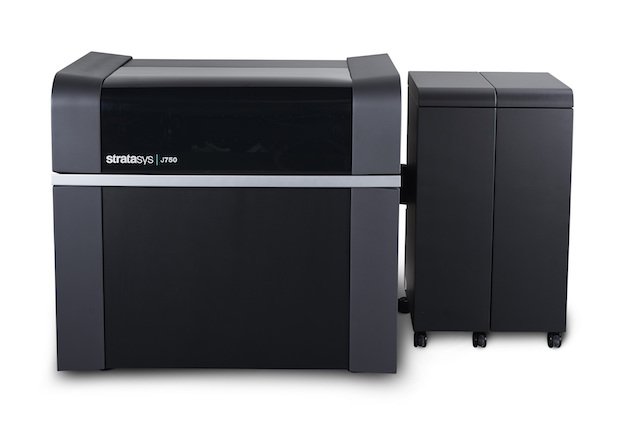Stratasys has announced it is launching an advanced 3D printing ‘Center of Excellence’ in partnership with SSM Health Cardinal Glennon Children’s Hospital in St. Louis, Missouri.
The centre is will see professionals undertake medical research into pre-surgical preparedness and patient treatment, and leverage Stratasys’ J750 machine which allows the printing of multiple materials in multiple colours. It will take contributions from both Stratasys and the SSM Health Cardinal Glennon Children’s Hospital, to share ideas and develop best-practices in the fields of neurosurgery, orthopaedics, cardiac treatment, and hand and cranial maxillofacial reconstructive surgery.
SSM Health Cardinal Glennon Children’s Hospital is a regular investor in modern technologies to enhance its service to the children of St. Louis. It is considered to be among the best of its kind in the U.S. and by partnering with Stratasys is looking to further this reputation.
“As a leading peadiatric care and academic research facility, we’re committed to continuous improvement by harnessing cutting-edge tools like 3D printing. The Stratasys J750 full-color, multi-material 3D printing solution allows us to do just that – powering unprecedented breakthroughs in planning and treatment,” said Steven Burghart, President of SSM Health Cardinal Glennon Children’s Hospital. “Our Center of Excellence stems from a long-standing partnership with Stratasys, working together to raise the bar in all that’s possible in patient care.”
The hospital’s SLUCare physician practice will see its doctors encouraged to explore new approaches and advance the care and well-being of its patients. They will have at their disposal the J750 machine, which can support the combination of both flexible and rigid plastics in a single print, mimicking hard bone and soft tissues. It can also achieve minute details, like thin vascular walls, and its blended transitions and transparencies can enable anatomically correct properties.
“3D printing provides increased confidence in the operating room and results in a faster, more efficient operation,” said Dr Alexander Lin, a SLUCare plastic surgeon and co-founder of the 3D Printing Center. “In a recent plastic surgery reconstruction of a skull defect, we used a 3D printed intra-operative guide that matched the skull defect precisely. Without hesitation, we could use this guide to create a precisely shaped bone graft that perfectly matched the skull defect. In the past, this process would have been estimated, which can lead to longer surgery with higher risk of brain and blood loos, and a less precisely fitted reconstruction.”
Scott Rader, GM of Healthcare Solutions at Stratasys, believes the new 3D Printing Center can become the ‘gold standard that demonstrates all that can be accomplished with medical 3D printing’ thanks to his company’s J750 machine and the leading medical professionals at SSM Health Cardinal Glennon. Though confident, Rader recognises the need for efficient collaboration if the ambitions of Stratasys and SMM Health Cardinal Glennon are to be achieved.
“Numerous advances have expanded treatment options for patients, particularly those who need highly advanced medical care,” Rader said. “Stratasys depends on our clinical partners to demonstrate patient benefit using 3D printing in training and the flow of patient care. To fully realise Dr. Lin’s vision of optimising treatment, there needs to be greater collaboration between industry and thought leading institutions to create standards, best-practices and to develop the fact base on how to get the most from a hospital-based 3D printing program.


